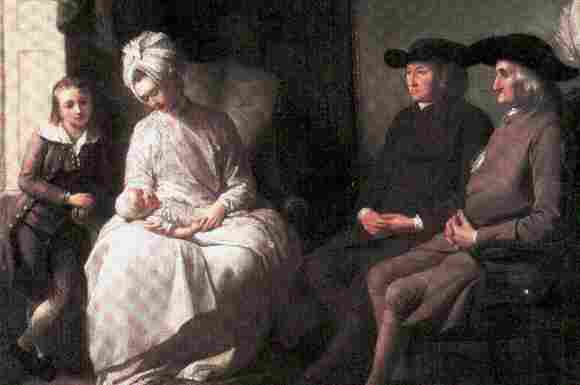
Figure 1.--West painted this Family scene about 1772. Notice his son' long hair and open lace collar.

Figure 1.--West painted this Family scene about 1772. Notice his son' long hair and open lace collar. |
Benjamin West was the first American painter to rise to international prominence. He lead an astonishing life that led him from theAmerican backwoods to the Ebnglish Royal Academy and acceptance into the
glitering halls of English aristocracy. This was an amazing accomplishment for a self-taught, largely uneducated colonial boy.
American painter Bejamin West was born in Springfield, Pennsylvania. His parents were
Quakers.
West recalls how he got his start as an artist. It began in the 1740s when he was a barefoot boy roaming the woods and meadows of
Chester Country, Pennsylvania--then a rude, savage wildreness. He fell in with a party of Indians who taught him how to make the
red and yellow paints that they used for their decorations. He began to use them in his own drawings. His mother gave him indigo
dye so he had the three primary colors. From the tail of his father's cat (whose cooperation is unrecorded) he collected enough hairs to
produce the first of the many brushes he would use in his life time. Whether this tale is true or not, it is the one West told again and again about his beginnings. West yold many other
tales about his childhood and early career, such as exclaiming that a classdical sculpture in the Vatican, reputedly the most perfect human figure that sculpture ever produced, "My God,
how like it is to a young Mohawk warrior." Almost certainly a clever bit of self promotion.
Europe was fascinated by American rusticia as Franklin was to so effectively demonstrate. Not
only that, West was the one painter in Euroe that had seen such prefection.
Benjamin was a self-taught artist.
West began
painting portraits in the villages around Philidelphia at the age of 16 and painted his first historical painting,
The Death of Socrates. At age 22 in 1760 he went to Italy to study. While there he painted some works with clasical themes
that were good enough to get him elected to the academoes in Florence, Bologna, and Parma.
West visited England in 1763 and spent the rest of his life there. A painting, Agrippina Landing with the Ashes of Germanicus attracted the attention of George III, who became the
artists steady friend and patron for 40 years.
West helped found the Royal Academy of Arts in 1768 and would eventually become
president. He was appointed historical painter to the king in 1772 and in 1792, surveyor of
the King's paintings.
West proceeded to paint historical theme, a few with American themes--Penn's Treaty with the Indians. He is perhaps best known for The Death of Wolfe a French and Indian War scene which he painted in 1771. Less well know, but perhaps more insightful was Portrait of Colonel Guy Johnson (1770). Johnson was the British Superintendent of
Indian Affairs in New York. The two paintings show the two poles of West's work, he would make
paintings from life and paintings from imagined historical or alegorical scenes.
West painted few chilfren. One of the best known shows his wife and two sons painted
about 1772. The youngest is still an infant, but the older is dressed in a brown suit
with knee breeches. The suit is heavily decorated with buttons and has a large opem, lace
collar.
When West left Italy for England, he was already engaged to Elizabeth Shewell of Philidelphia. He sent for her and they wre mairred in London during 1764.
West had two sons.
West lead a long life, dying in England at the age of 81.
Navigate the Boys' Historical Clothing Artist pages:
[Return to the Main arrtist page]
[Chronology]
[Countries]
[Individuals]
[Styles]
Navigate the Boys' Historical Clothing Web Site:
[Introduction]
[Chronology]
[Clothing styles]
[Biographies]
[Bibliographies]
[Activities]
[Countries]
[Contributions]
[Boys' Clothing Home]